Complete Solutions to Objective question of chapter MOTION IN A STRAIGHT LINE of Class 11 book with complete answers and questions
| Class 11 | PHYSICS |
| Chapter | MOTION IN A STRAIGHT LINE |
| GRB PUBLICATION | Objective question |
| Number Of Questions | 100 |
| Academic Year | 2023-24 |
A person travels along a straight road for the first half length with a constant speed `v_(1)` and the second half length with a constant speed `v_(2)`. The average speed V is:
02:43View SolutionA motorist travels from A to B at a speed of `40 km//hr` and returns at a speed of 60 km/hr. His average speed will be:
03:21View SolutionA train of `150 m` length is going toward north direction at a speed of `10 ms^-1`. A parrot flies at a speed of `5 ms^-1` toward south direction parallel to the railway track. The time taken by the parrot to cross the train is equal to.
03:47View SolutionThe displacement `s` of a point moving in a straight line is given by:
`s = 8 t^(2) + 3t - 5`
`s` being in cm and `t` in s. The initial velocity of the particle is:01:11View SolutionA travelling wave in a stretched string is described by the equation `y = A sin (kx - omegat)` the maximum particle velocity is
03:26View SolutionThe velocity of a body depends on time according to the equative `v = 20 + 0.1 t^(2)`. The body is undergoing
02:33View SolutionA point moves with uniform acceleration and `v_(1), v_(2)`, and `v_(3)` denote the average velocities in the three successive intervals of time `t_(1).t_(2)`, and `t_(3)` Which of the following Relations is correct?.
05:55View SolutionThe relation between time t and displacement x is `t = alpha x^2 + beta x,` where `alpha and beta` are constants. The retardation is
03:30View SolutionHow long will it take to stop a car travelling at a speed of `20 m//sec`, if the uniform acc. during braking is `-5 m//s^(2)`?
01:51View SolutionA body starting from rest covers a distance of 9 m in the fifth second. The acceleration of the body is:
03:35View SolutionA car is moving along a straight road with a uniform acceleration. It passes through two points P and Q separated by a distance with velocity `30km//h` and `40 km//h` respectively. The velocity of the car midway between P and Q is
03:17View SolutionA particle starts moving from the position of rest under a constant acc. It travels a distance x in the first 10 sec and distance y in the next 10 sec, then:
02:37View SolutionTripling the speed of the motor car multiplies the distance needed for stopping it by
01:40View SolutionA car travelling at a speed of 30 km / hour is brought to a halt in 8 m by applying brakes. If the same car is travelling at 60 km / hour , it can be brought to a halt with the same braking force in
02:44View SolutionA truck and a car moving with the same KE are brought to rest by the application of brakes which provide equal retarding force. Which of them will come to rest in a shorter distance ?
03:17View SolutionA body sliding on a smooth inclined plane requires `4s` to reach the bottom, starting from rest at the at the top. How much time does it take to cover ont-foruth the distance startion from rest at the top?
02:53View SolutionA body of mass m slides down an inclined plane making an angle of `45^(@)` with the horizontal. If the coefficient of friction between the body and the plane be 0.3, the acceleration of the body is approximately equal to :
04:00View SolutionCheck up only the correct statement in the following.
03:58View SolutionAn electron of mass `m_(e )` initially at rest moves through a certain distance in a uniform electric field in time `t_(1)`. A proton of mass `m_(p)` also initially at rest takes time `t_(2)` to move through an equal distance in this uniform electric field.Neglecting the effect of gravity, the ratio of `t_(2)//t_(1)` is nearly equal to
03:35View SolutionA particle moving in a straight in a straight line has velocity and displacement equation as
`v = 4 sqrt(1 + s)`,
where `v` is in m/s and s is in m. The initial velocity of the particle is:01:54View SolutionStarting from rest a particle moves in a straight line with acceleration
`a = (25 - t^(2))^(1//2) m//s^(2) " for " 0 le t le 5s`
`a = (3pi)/(8) m//s^(2) " for " t gt 5s`
The velocity of particle at `t = 7 s` is:05:00View SolutionThe motion of a body falling from rest in a resisting medium is described by the equation `(dv)//(dt)=a-bv` where a and b are constant . The velocity at any time `t` is given by
03:15View SolutionIf a light and a heavy body are released from same height:
01:54View SolutionTwo bodies of different masses `m_(a)` and `m_(b)` are dropped from two different heights, viz, a and b. The ratio of time taken by the two to drop through these distance is:
01:07View SolutionTwo bodies one held 30 cm directly above the other are relased simultaneously and fall freely under gravity. After 2 sec their relative separation will be :
05:18View SolutionA body is released from the top of a tower of height h. It takes t sec to reach the ground. Where will be the ball after time `(t)/(2)` sec?
01:31View SolutionA body is released from a great height and falls freely towards the earth. Exactly one sec later another body is released. What is the distance between the two bodies 2 sec after the release of the second body ?
04:34View SolutionA body falls from rest freely under gravity with an acceleration of `9.8 m//s^(2)`. Neglecting air resistance, the distance travelled by the body during the third second of its motion will be:
01:17View SolutionA stone is thrown upwards from the surface of the earth with an initial speed of 5 m/s. The stone comes to rest at a height of : `(g = 1000 "dyne"//g)`
01:10View SolutionAn object is projected upwards with a velocity of 4.9 m/s. It will strike the ground in approximately
03:57View SolutionA boy throws balls into air.He throws one, whenver the previous one is at its highest point. How high do the balls rise if he throws one ball each sec ?
05:24View SolutionA pebble is thrown vertically upwards from a bridge with an height of the bridge is :
View SolutionA ball is thrown vertically upwards with a speed of `10 m//s` from the top of a tower 200 m height and another is thrown vertically downwards with the same speed simultaneously. The time difference between them on reaching the ground is `(g=10 m//s^(2))`
05:47View SolutionA wooden block is dropped from the top of a cliff 100m high and simultaneously a bullet of mass 10 g is fired from the foot of the cliff upwards with a velocity of `100 m//s`. The bullet and wooden block will meet each other after a time:
02:30View SolutionA stone is dropped into a lake from a tower 500 metre high. The sound of the splash will be heard by the man approximately after
02:31View SolutionA block slides down a smooth inclined plane when released from the top, while another falls freely from the same point :
05:42View SolutionThe time taken by a particle to slide down a smooth inclined plane is double the time it would take in falling down through a height equal to the vertical height of the plane. The inclination of the plane with horizontal is :
09:24View SolutionBetween two stations a train starting from rest first accelerates uniformly, then moves with constant velocity and finally retarts uniformly to come to rest. If the ratio of the time taken be `1 : 8 : 1` and the maximum speed attained be `60 km//h`, then what is the average speed over the whole journey ?
03:03View SolutionA ball is thrown vertically upwards from the ground. If `T_1` and `T_2` are the respective time taken in going up and coming down, and the air resistance is not ignored, then
05:20View SolutionName the property of bodies due to which they resist change in their state of rest or state of uniform motion along a straight line.
01:55View SolutionVelocity-time curve for a body projected vertically upwards is with times (s)
02:15View SolutionIf earth stands still what will be its effect's on man's weigh
02:15View SolutionThe displacement-time graph for two particles A and B are straight lines inclined at angles of `30^(@)` and `60^(@)` with the time axis. The ratio of velocities of `V_(A) :V_(B)` is
02:08View SolutionThe displacement of a particle as a function of time is shown in . It indicates
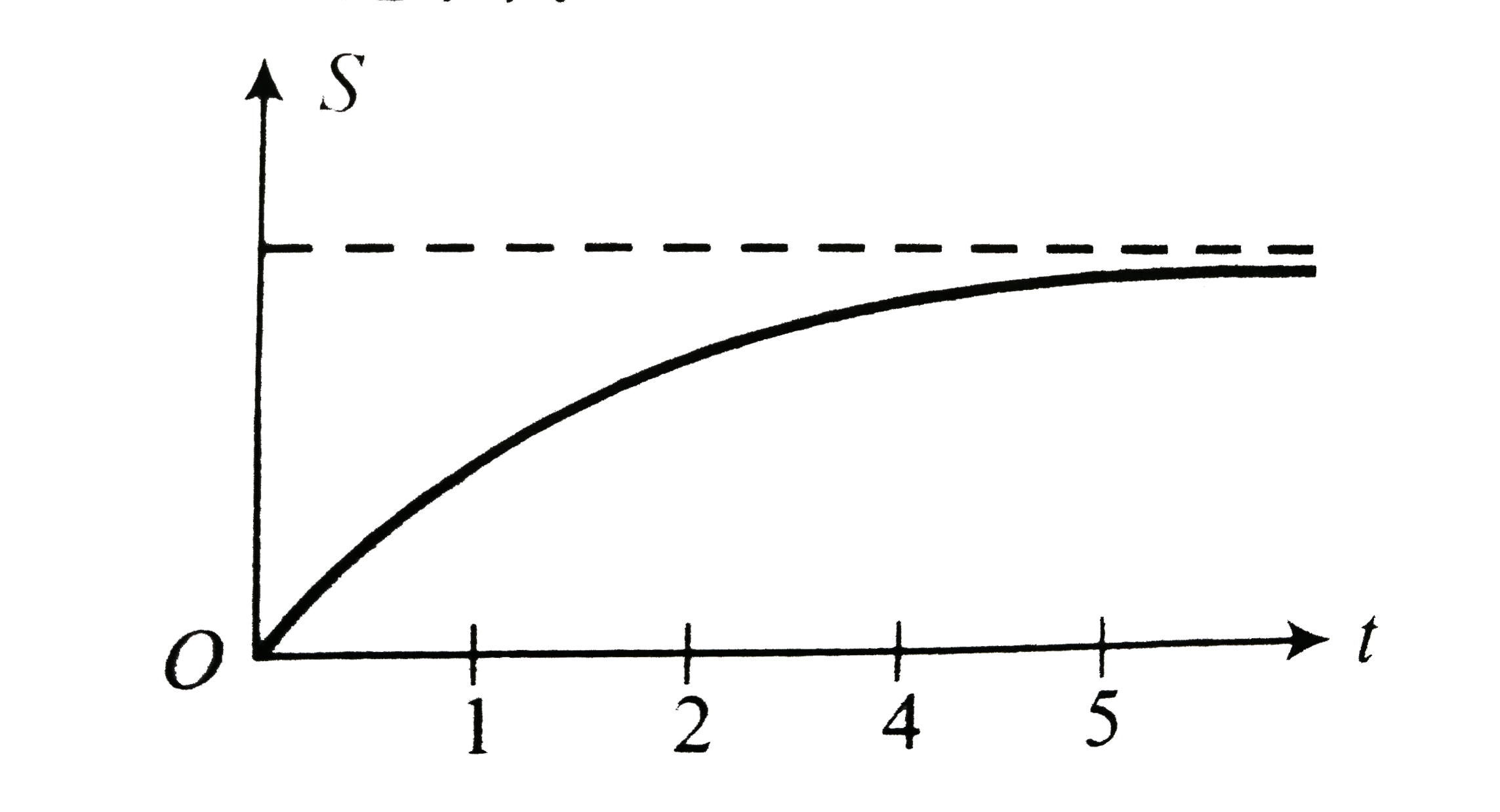 .02:05View Solution
.02:05View SolutionThe Figure-1.109 shows the displacement-time graph ofa body subject only to the force of gravity. This graph indicates that:
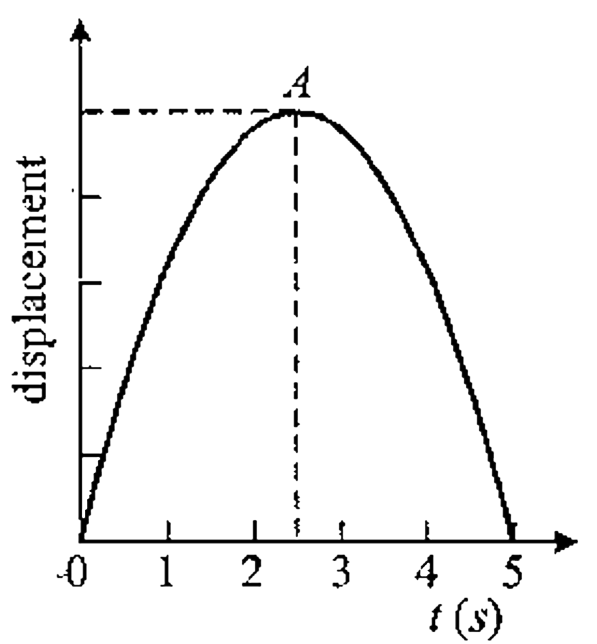 01:50View Solution
01:50View SolutionThe figure-1.125 shows the acceleration versus time graph of a train. If it starts from rest, the distance it travels before it comes to rest is :
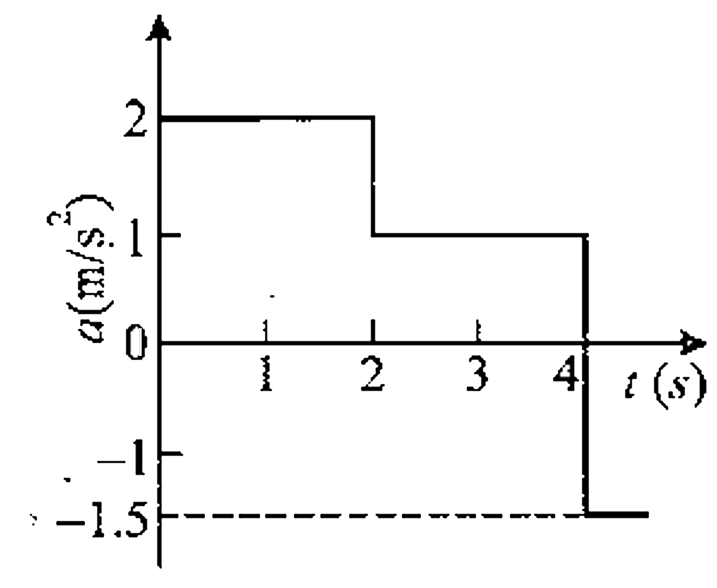 04:07View Solution
04:07View SolutionWhich of the following represents the motion of a body moving in a straight line under constant acceleration ?
01:50View SolutionA particle is thrown vertically upwards with a velocity `v`. It returns to the ground in time T. which of the following graphs correctly represents the motion ?
05:18View SolutionThe velocity time graph of a body is shown in fig. it indicates that :
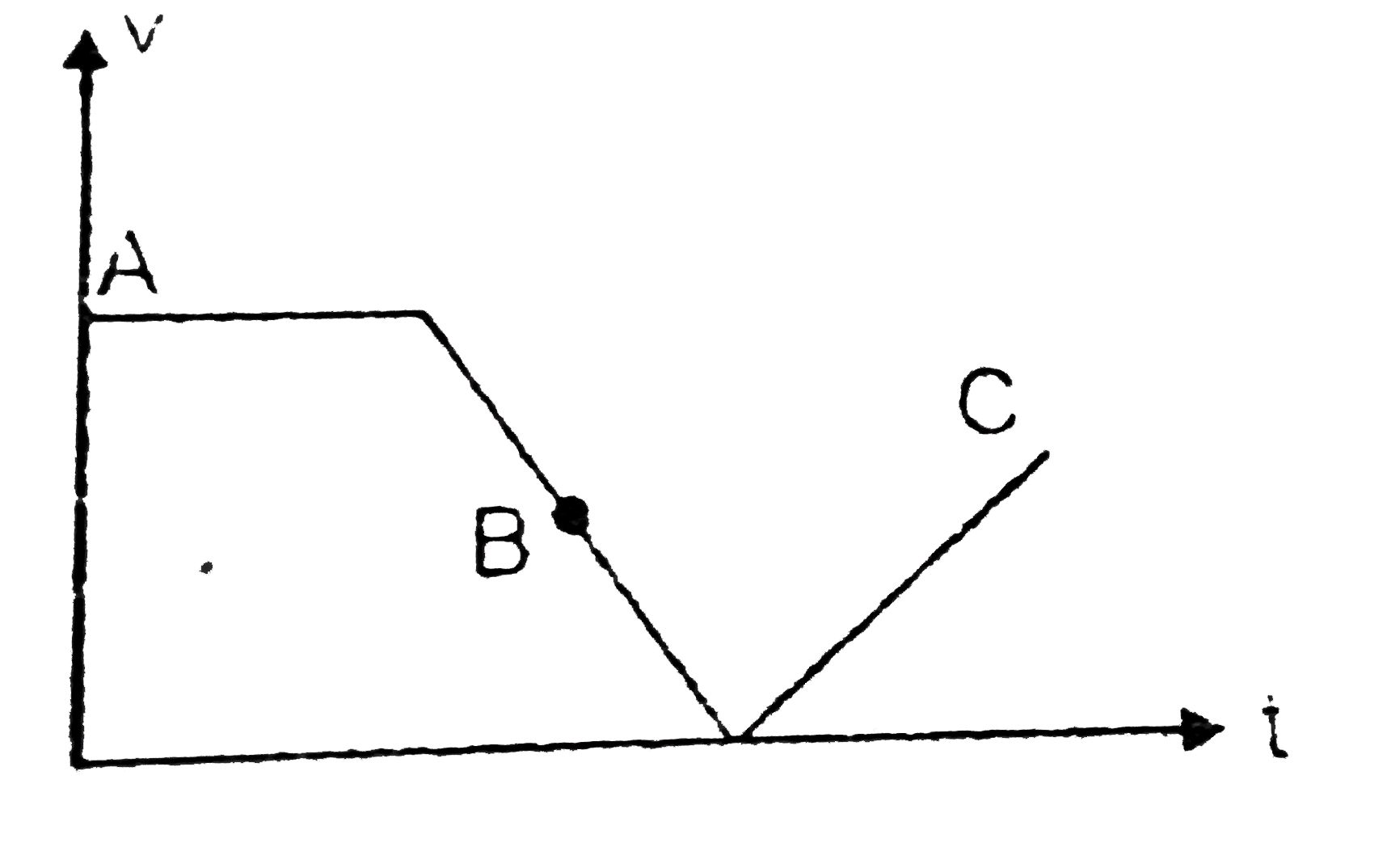 02:04View Solution
02:04View SolutionThe velocity time curve of a moving point is shown in Fig. Find the retardation of the particle for the portion `CD`.
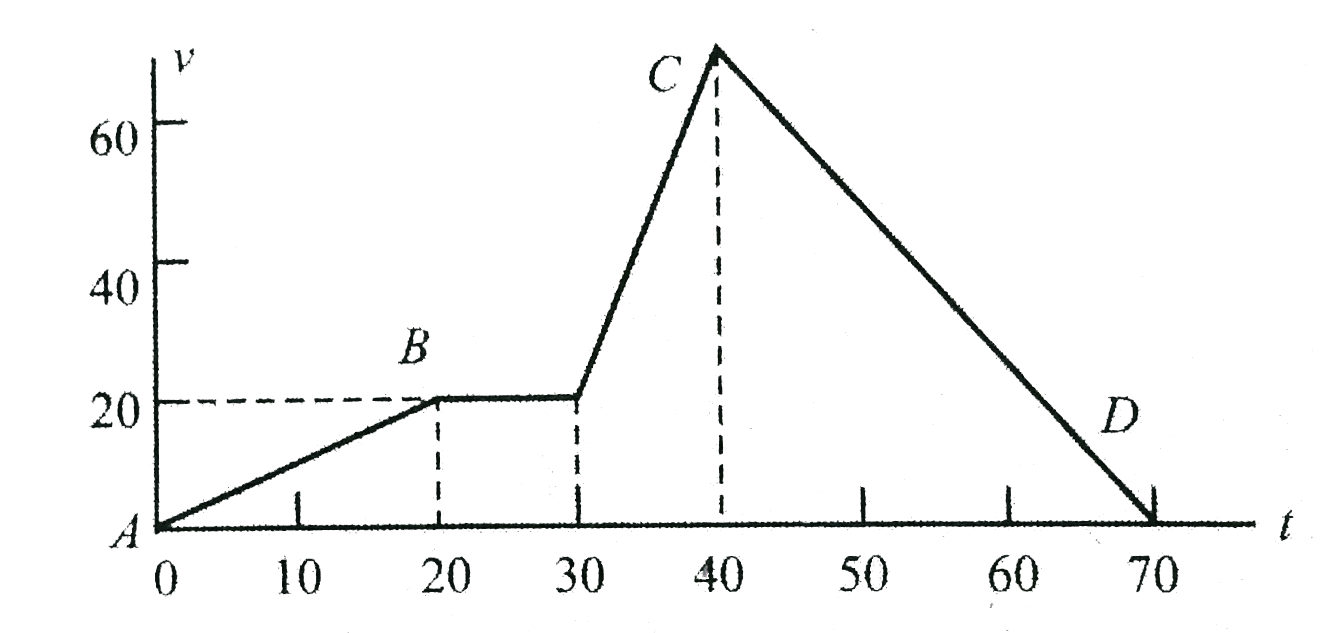 .01:19View Solution
.01:19View SolutionThe area of the shaded portion of the graph represents :
 02:54View Solution
02:54View SolutionA rocket is fired upwards. Its velocity versus time graph is shown in the figure-1.131. The maximum height reached by the rocket is:
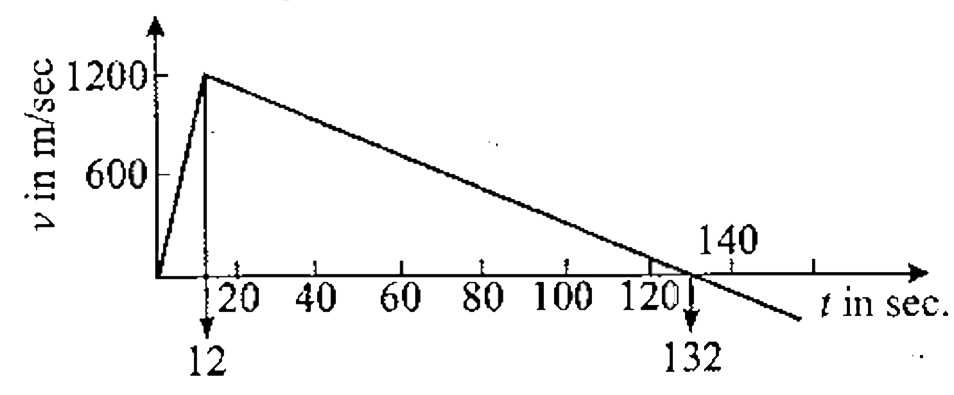 01:40View Solution
01:40View SolutionIn the above problem the acceleration of the rocket during burning interval is :
View SolutionThe velocity versus time graph of a body moving in a straight line is as follows. The distance travelled by the body is 5 sec is
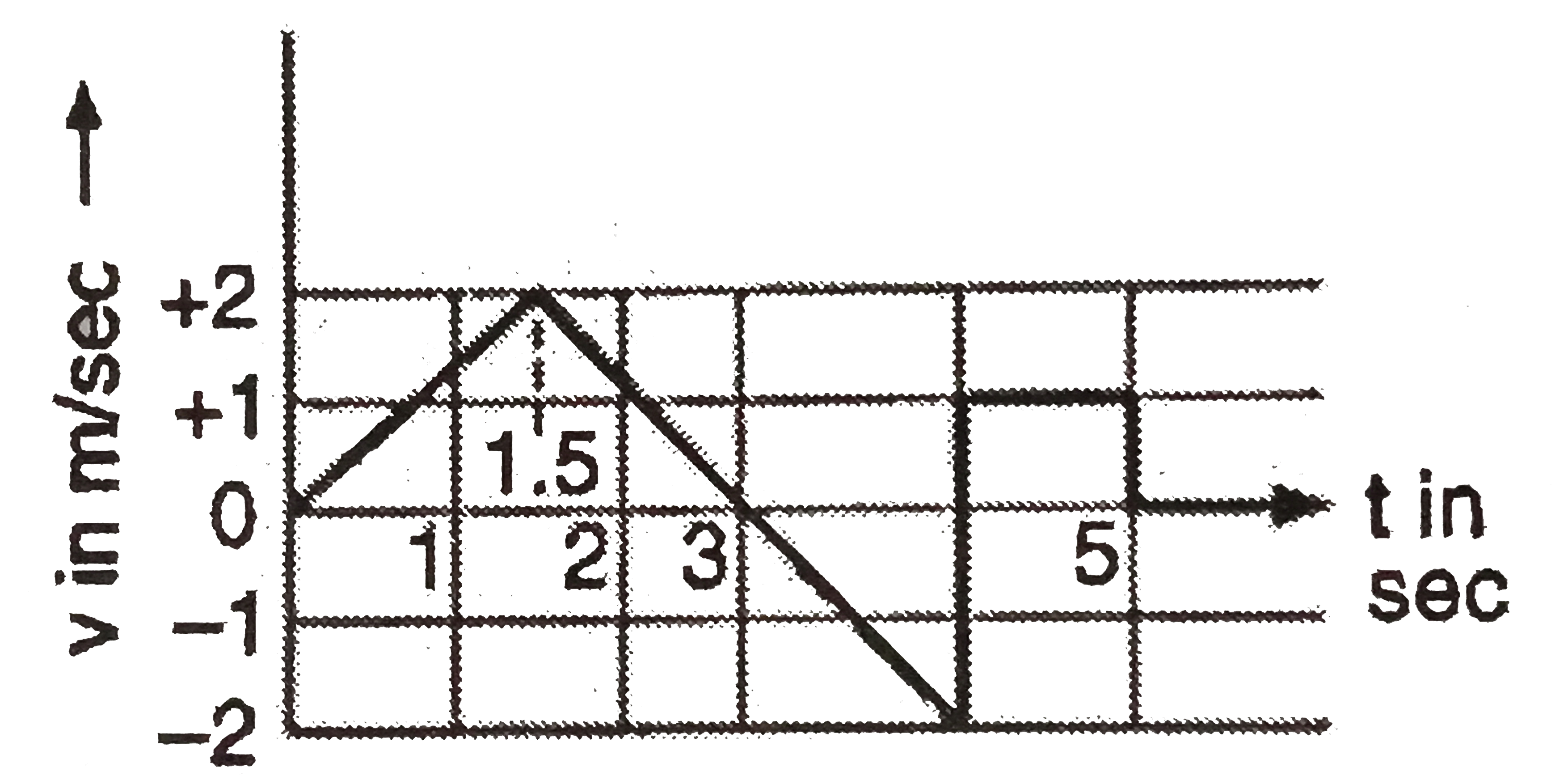 01:09View Solution
01:09View SolutionThe velocity-time graph of a linear motion is shown in figure. The displacement & distance from the origin after 8 sec is :-
 04:10View Solution
04:10View SolutionA body starting from rest moves along a straight line with a constant acceleration. The variation of speed (v) with distance (s) is represented by the graph:
02:33View SolutionA ballon is ascending vertically with an acceleration fo `0.2m//s^(2)`. Two stones are dropped from it at an interval of `2sec`. Find the distance between them `1.5sec` after the second stone is released. (use `g =9.8 m//s^(2))`
05:41View SolutionA swimmer crosses a flowing stream of width `omega` to and fro in time `t_(1)`. The time taken to cover the same distance up and down the stream is `t_(2)`. If `t_(3)` is the time the swimmer would take to swim a distance `2omega` in still water, then
08:12View SolutionA street car moves rectilinearly from station A to the next station B (from rest to rest) with an acceleration varying according to the law `f = a-bx,` where a and b are constants and x is the distance from station A. The distance between the two stations and the maximum velocity are
05:02View SolutionA particle starts from rest and moves with acceleration a which varies with time `t` as `a=kt` where `k` is a costant. The displacement `s` of the particle at time `t` is
01:38View SolutionA boy throws up a ball vertically insided an elevator, with a velocity of 10 m/s relative to the elevator. It takes 1 second for the ball to reach the hand of the boy. The acceleration of the elevator, taking `= 10 m//s^(2)`, is:
06:02View SolutionA body of mass `m`, moving along the positive x direction is subjected to a resistive force `F = Kv^(2)` (where K is a constant and `v` the particle n velocity). If `m = 10 kg v = 10 m//s` at `t = 0, " and " K = 2N (m//s)^(-2)` the velocity when `t = 2s` is:
05:22View SolutionIt takes one minute for a passenger standing on an escalator to reach the top. If the escalator does not move it takes him `3` minute to walk up. How long will it take for the passenger to arrive at the top if he walks up the moving escalator ?
04:54View SolutionFor `(1)/(m)` of the distance between two stations a train is uniformly accelerated and `(1)/(n)` of the distance it is uniformly retarded. It starts from rest at one station and comes to rest at the other. The ratio of the greatest velocity to the average velocity will be:
View SolutionTwo plane, smooth surfaces are parallel to each other and are initiallt a distance of 2 metre apart. The two surfaces approach each other with a velocity of `1 cm//sec`. A particle starts with a velocity of 4 cm/sec from one surface and collides normally and elastically on the other surface from the time the two surfaces start moving. The collisions continues back and forth till the surfaces touch each other. The total distance covered by the particle is :
View SolutionA tennis ball is released so that it falls vertically to the floor and bounces again. Taking velocity upwards as positive, which of the following graphs best represents the variation of its velocity `v` with time `t`?
05:12View SolutionTwo trains take `3s` to pass another when going in the opposite directions but only `2.5s` if the speed of one is increased by `50%`. The time one would take to pass the other when going in the same direcrtioin at their original speed is
04:28View SolutionTwo bodies move in a straight line towards each other at initial velocities `v_(1)` and `v_(2)` and with constant acceleration `a_(1)` and `a_(2)` directed against the corresponding velocities at the initial instant. What must be the maximum initial separation between the bodies for which they meet during the motion ?
03:38View SolutionA body moves from rest with a constant acceleration. Which one of the following graphs represents the variation of its kinetic energy K with the distance travelled x?
01:15View SolutionA particle travels 10m in first 5 sec and 10 m in next 3 sec. Assuming constant acceleration what is the distance travelled in next 2 sec.
04:21View SolutionA man starts chasing his dog 10 second after the latter runs along a straight track at a unifrom acceleration of `0.5 m//s^(2)`. The track is 2 km long after which it bends aways into the field. What will be the minimum constant speed of the man so that he may catch the dog before the bend in the track ?
07:00View SolutionThe speed of a body moving on a straight track varies according to `v = 2 t + 13 " for " 0 le t le 5 s, v = 3 t + 8 " for " 5 lt t lt 7s` and `v = 4 t + 1 " for " t lt 7s`. The distance are measured in metre. The distance in metres moved by the particle at the end of 10 second is :
02:23View SolutionThe speed of a car was `50 km//hr` for the first 900s, then 40 km/hr for the 50 km and then the car decelerated uniformly at `10 km//hr^(2)` till it came to rest. The average speed of the car was :
View SolutionFrom the top of a tower a stone is thrown up which reaches the ground in time `t_(1)`. A second stone thrown down with the same speed reaches the ground in a time `t_(2)`. A third stone released from rest from the same location reaches the ground in a time `t_(3)`. then:
View SolutionA parachutist steps from an aircraft, falls freely for two second, and then opens his parachute. Which of the following acceleration time `(a - t)` graphs best represents his downward acceleration `a` during the first 5 second ?
01:47View SolutionWith what speed should a body be thrown upwards so that the distances traversed in 5th second and 6th second are equal?
05:18View SolutionA particle moving with a uniform acceleration along a straight line covers distances `a` and `b` in successive intervals of `p` and `q` second. The acceleration of the particle is
04:21View SolutionA particle's position as a function of time is described as `y (t) = 2t^(2) + 3t + 4`. What is the average velocity of the particle from `t = 0` to `t = 3` sec ?
04:31View SolutionA coin is dropped in a lift. It takes time `t_(1)` to reach the floor when lift is stationary. It takes time `t_(2)` when lift is moving up with costant acceleration. Then
04:22View SolutionThe `v - t` graph for a particle is shown. The distance travelled in the first four seconds is:
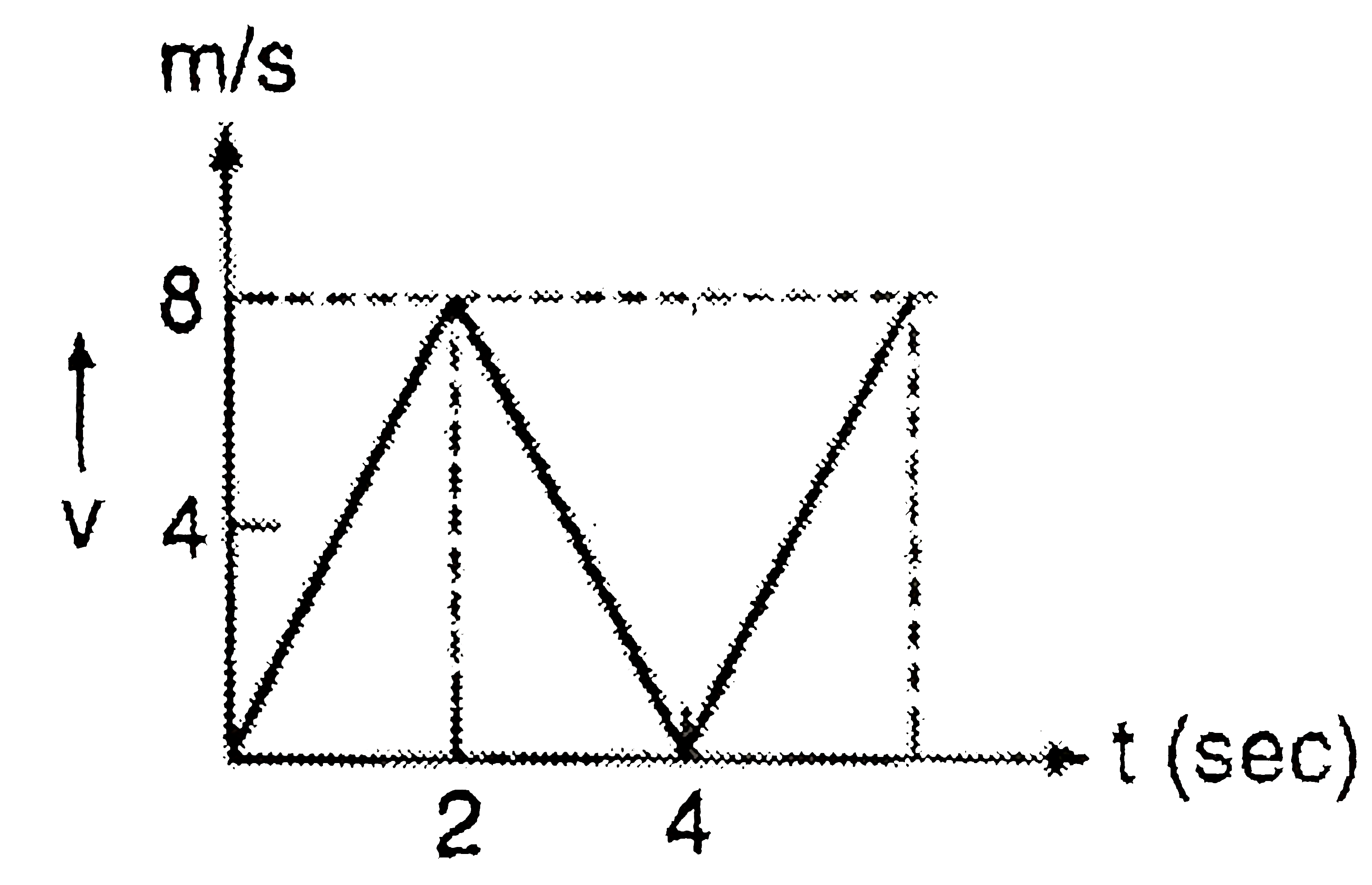 02:35View Solution
02:35View SolutionThe velocity of a particle is `v = v_(0) + g t + ft^(2)`. If its position is ` x=0 ` at ` t= 0 `, then its displacement after unit time `( t = 1 )` is
03:52View SolutionA particle located at `x = 0` at time `t = 0`, starts moving along with the positive ` x-direction` with a velocity 'v' that varies as ` v = a sqrt(x)`. The displacement of the particle varies with time as
03:56View SolutionA ball of mass 0.2 kg is thrown vertically upwards by applying a force by hand. If the hand moves 0.2 m while applying the force and the ball goes upto 2 m height further, find the magnitude of the force. (Consider `g=10m//s^2`).
03:42View SolutionA man throws balls with the same speed vertically upwards one after the other at an interval of 2s. What should be the speed of the throw so that more than two balls are in the sky at any time ? (Given `g = 9.8 m//s^(2)`)
06:29View SolutionA car moves from `X` to `Y` with a uniform speed `v_u` and returns to `Y` with a uniform speed `v_d`. The average speed for this round trip is :
02:58View SolutionA point initially at rest moves along x-axis. Its acceleration varies with time as `a = (6t + 5) m//s^(2)`. If it starts from origin, the distance covered in 2 s is:
02:26View SolutionA lift is moving with a uniform downward acceleration of `2 m//s^(2)`. A ball is dropped from a height 2 m from the floor of lift. Find the time taken after which ball will strke the floor ? (Take `g = 10 m//s^(2)`)
04:19View SolutionA juggler maintains four balls in vertically upwards motion. He attempts next ball after `(1)/(4)` seconds. For the show to go one, what should be the height for which he thrwos the ball ? `(g = 10 m//s^(2))`
04:39View SolutionA particle is projected vertically from the ground, takes time `t_(1)` upto point A, `t_(2)` from point A to B and time `t_(3)` from point B to highest point and back to the ground. Find the height of the middle point of A and B from the ground.
View SolutionA particle moving in a straight line covers half the distance with speed of `3 m//s`. The half of the distance is covered in two equal intervals with speed of `4.5 m//s and 7.5 m//s` respectively. The average speed of the particle during this motion is :
03:12View SolutionA train moving with uniform speed passes a pole in 10 sec and a bridge of length 1200 m in 130 sec. speed of the train is :
06:38View SolutionEngine of a train that is moving with unifrom acceleration passes a pole with speed `u` while the last compartment passes the pole with speed 'v'. The middle point of the train passes the given pole with speed:
06:25View SolutionFor a particle moving along a straight line, its velocity 'v' and displacement 's' are related as `v^(2) = cs`, here c is a constant. If the displacement of the particle at `t = 0` is zero, its velocity after 2 sec is:
05:45View SolutionA car accelerates from rest at a constant rate `alpha` for some time, after which it decelerates at a constant rate `beta,` to come to rest. If the total time elapsed is t seconds. Then evalute (a) the maximum velocity reached and (b) the total distance travelled.
05:34View SolutionIn Q.94, time for which the car decelerates is:
View SolutionIn Q.94, total distance travelled by the car is:
View SolutionA person is standing at a distance 's' m from a bus. The bus begins to move with cosntant acceleration 'a' `m//s^(2)` away from the person. To catch the bus, the person runs at a constant speed 'v' m/s towards the bus. Minimum speed of the person so that he can catch the bus is:
04:34View SolutionThe driver of a train moving at a speed ` v_(1)` sights another train at a disane ` d`, ahead of him moving in the same direction with a slower speed ` v_(2)`. He applies the brakes and gives a constant teradation ` a` to his train. Show that here will be no collision if ` d gt (v_(1) -v_(2))^(2) //2 a`.
04:15View SolutionThe deceleration exerienced by a moving motor blat, after its engine is cut-off is given by `dv//dt=-kv^(3)`, where `k` is constant. If `v_(0)` is the magnitude of the velocity at cut-off, the magnitude of the velocity at a time `t` after the cut-off is.
04:15View SolutionA train is moving towards East with a speed 20 m/s. A person is running on the roof of the train with a speed 3 m/s against the motion of train. Velocity of the person as seen by an observer on ground will be :
04:43View Solution
Objective question questions and complete solutions for chapter MOTION IN A STRAIGHT LINE of GR BATHLA & SONS PHYSICS (HINGLISH) of Class 11
